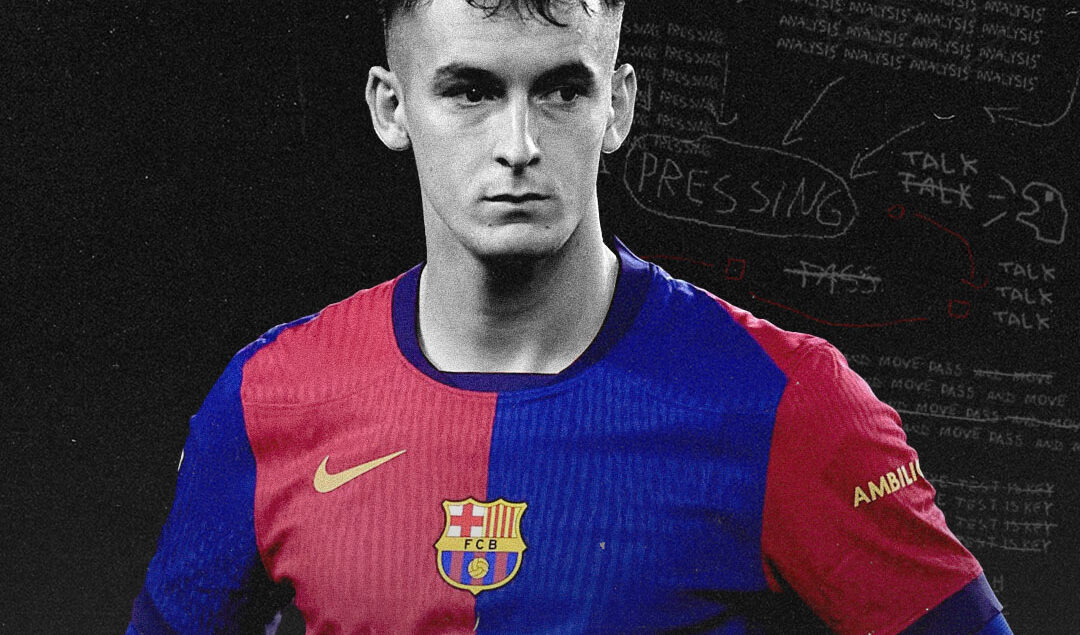A Deep Dive into Barcelona’s Set-Piece Success This Season
It has been nothing short of a sensational start to the Hansi Flick era for FC Barcelona, who find themselves atop the LaLiga table with 34 points from 14 matches. Their set-piece profligacy has been a major factor in their success — between corner kicks and indirect free kicks, the Blaugranas have scored 13 goals in 16 matches across LaLiga and the UEFA Champions League, whilst they have also conceded 15 goals in that same timeframe — none of which have come from a dead-ball situation.
Barcelona have not only delivered plenty of threat in terms of attacking corner kicks, but also defending them. Barcelona have a different pattern depending on the angle of the corner and the target area, relying heavily on swinging the ball outward. Raphinha will typically deliver the set-piece, where the team will then have two different patterns to use. They will either target a player at the edge of the box or aim towards the far post and then redirect the ball into the middle of the six-yard area.
In the first pattern, Barcelona will have three players on the edge of the box, with four attackers attracting the opposing defenders towards the first post. This pattern helped Barcelona achieve success vs. Deportivo Alavés, who left just one player in front of the edge of the box, with the Blaugrana players separating from their defenders and attracting the attention of other opponents, with the target player making his way to the front of the goal.
We can see four Barcelona players run towards the near post to attract defenders towards this area and thus empty the far post of the opposing players. Three Barcelona players — Lamine Yamal, Iñigo Martínez and Fermín López — find themselves with ample time and space in this clearance area, with Martínez serving as the reference point vs. Young Boys.
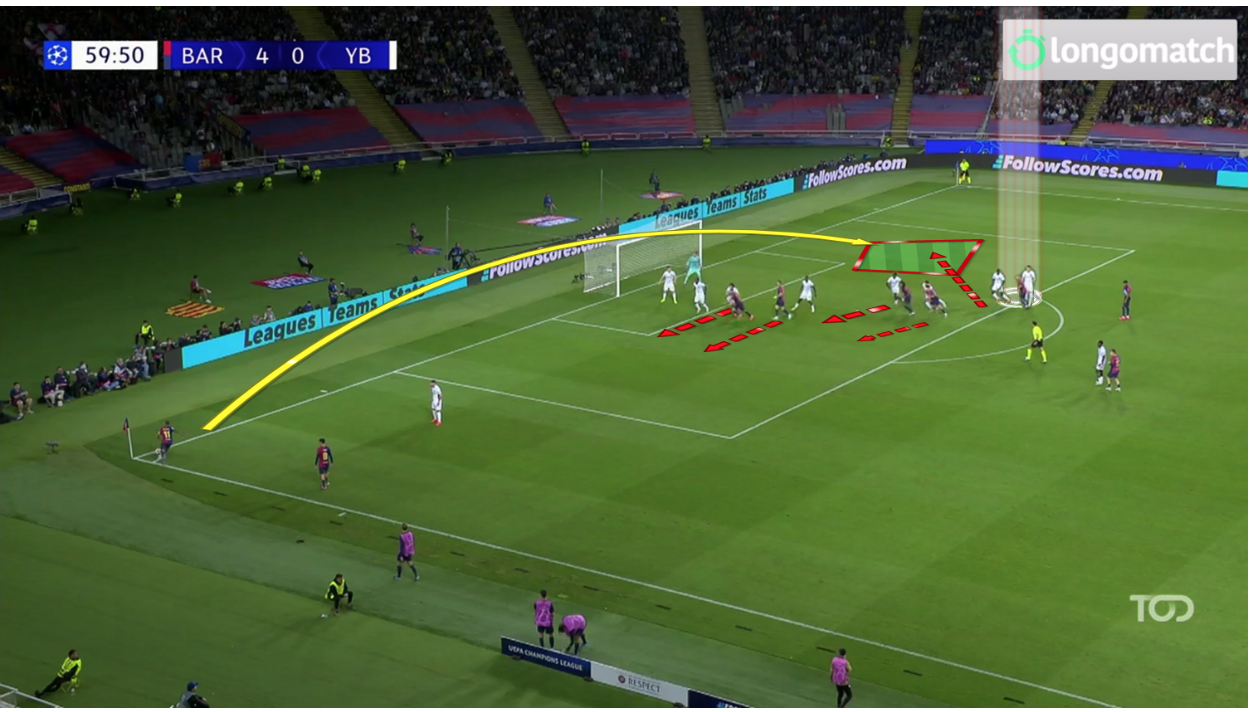
Young Boys’ defense stays vigilant with three defenders facing the Barcelona trio, and whilst Martínez makes a darting run towards the near post, the Swiss defense had it covered and extinguished the danger.
Against Real Valladolid, we can see three players on the edge of the box. Dani Olmo serves as a decoy, pulling the opposing defender towards the far post and thus clearing space between the defenders. Martínez attempts to take advantage of his teammates’ screen and makes a stellar blind-side run in order to exploit the open space, only to come out second in the aerial duel.
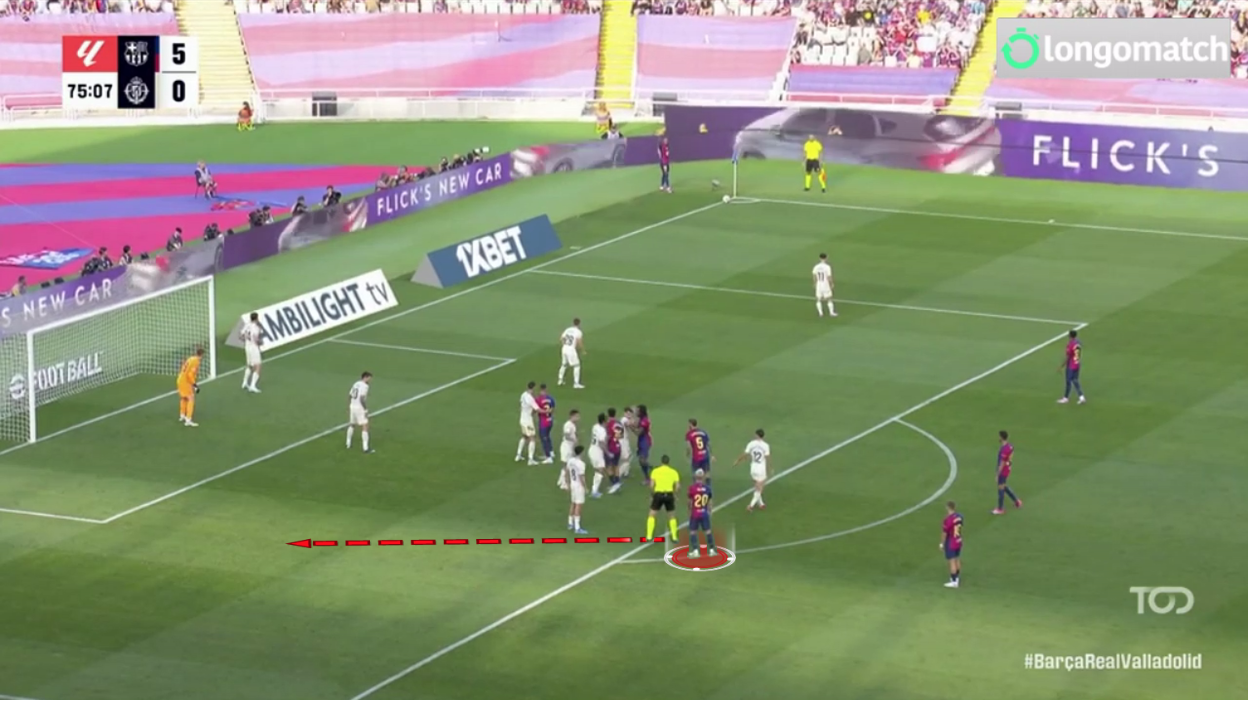
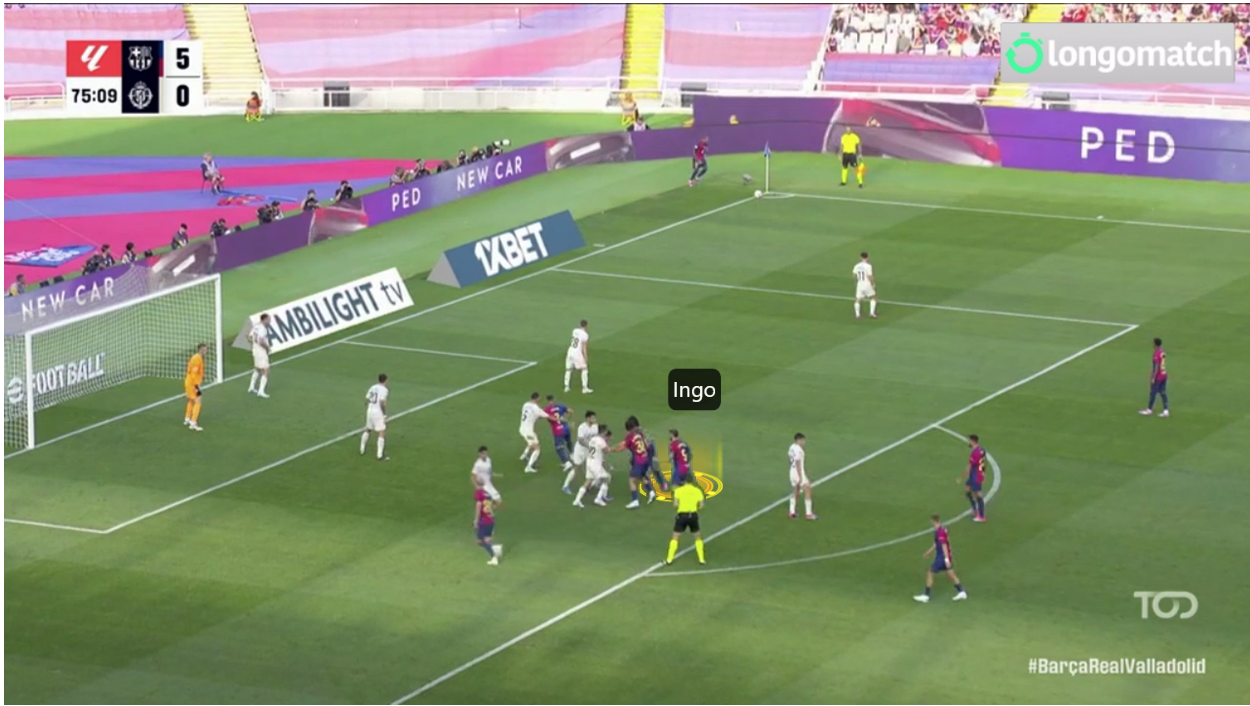
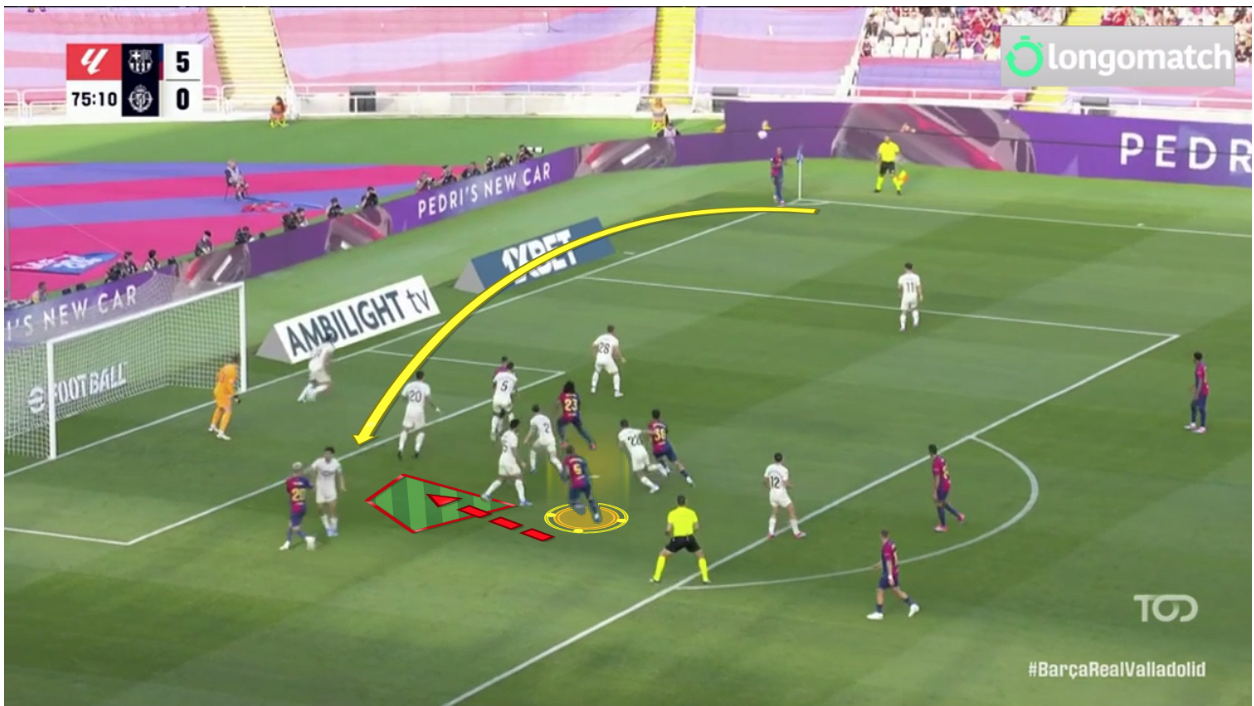
Here, Pedri stands next to Marc Casadó by the penalty arc. We can also notice Lewandowski and Martínez making runs towards the first post and blocking Alavés defenders. Alavés’ shape left one player to mark Casadó and Pedri and one player to prevent the short corner, whilst two of their players are on the near post. Ultimately, Pedri would arrive in an unmarked space but failed to make the most of the goal-scoring opportunity.
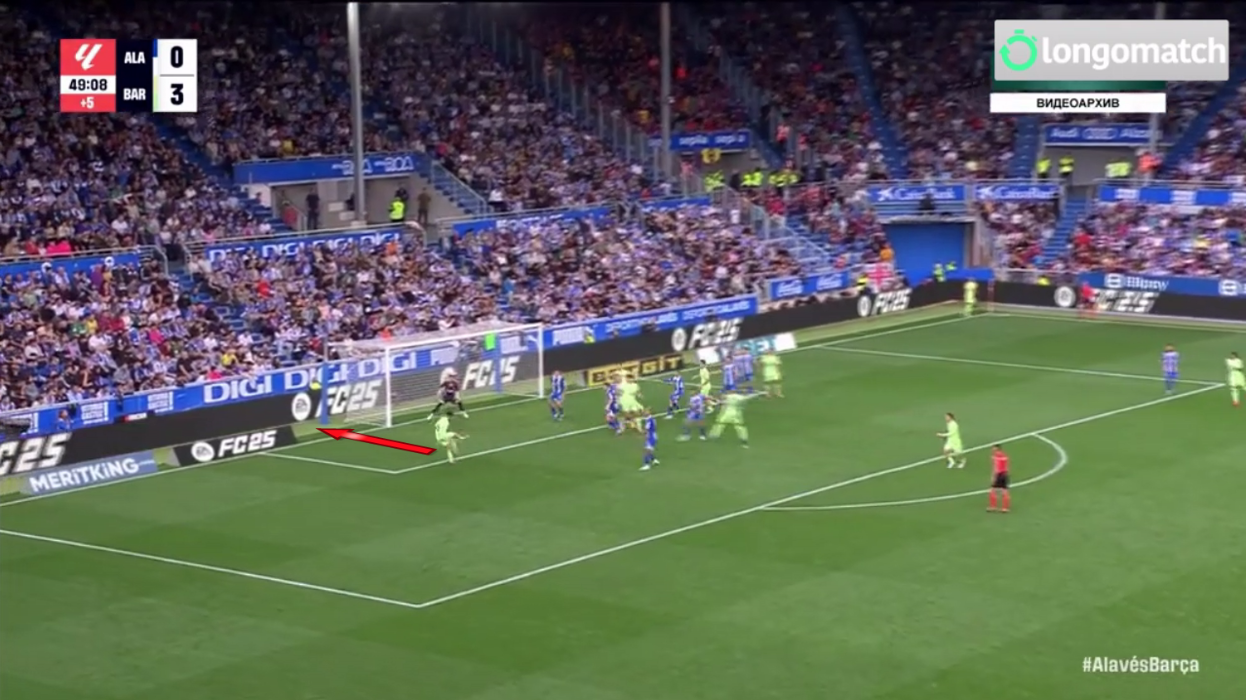
Moving on to the second pattern, Barcelona will often utilize the far post to drag and block opponents. Barcelona will put a player in the six-yard area with two players (Pedri and Casadó) on the penalty arc, whilst Yamal will be waiting for the short corner. Meanwhile, Martínez, Lewandowski, as well as Pau Cubarsí and Jules Koundé will be inside the penalty area.
Three of the aforementioned quartet will run to the near post to attract the opposing defenders, whilst the other — Martínez in this case — will go towards the far post. This serves to confuse the defenders and allow the Barcelona players to lose their marker. The target at the far post is able to head the ball to one of his colleagues, who can then attack the goal.
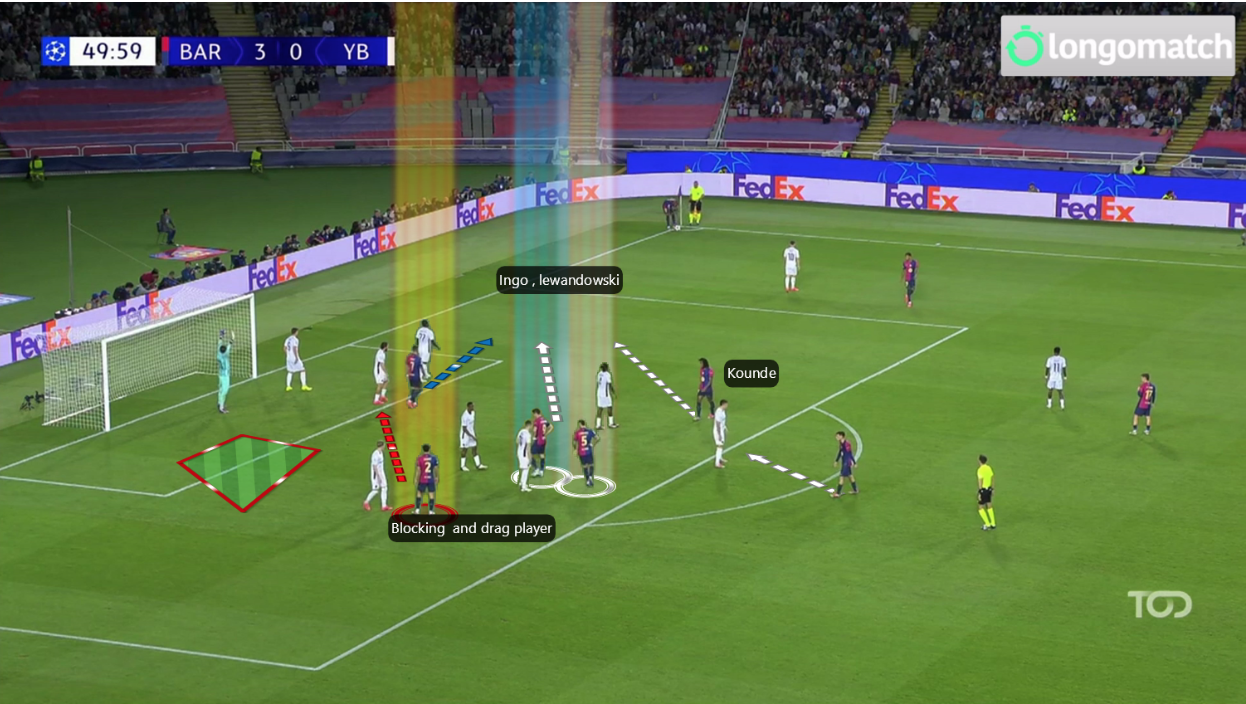
Cubarsí (yellow) and Lewandowski (blue) run towards the near post, whilst Martínez is able to deceive his opponent and gain separation. Cubarsí blocks his defender and opens up space for Martínez to attack and head the ball towards the near post. With all the Young Boys defenders ball-watching and not taking immediate action, Lewandowski is able to move between the defenders and fire the ball into the back of the net.
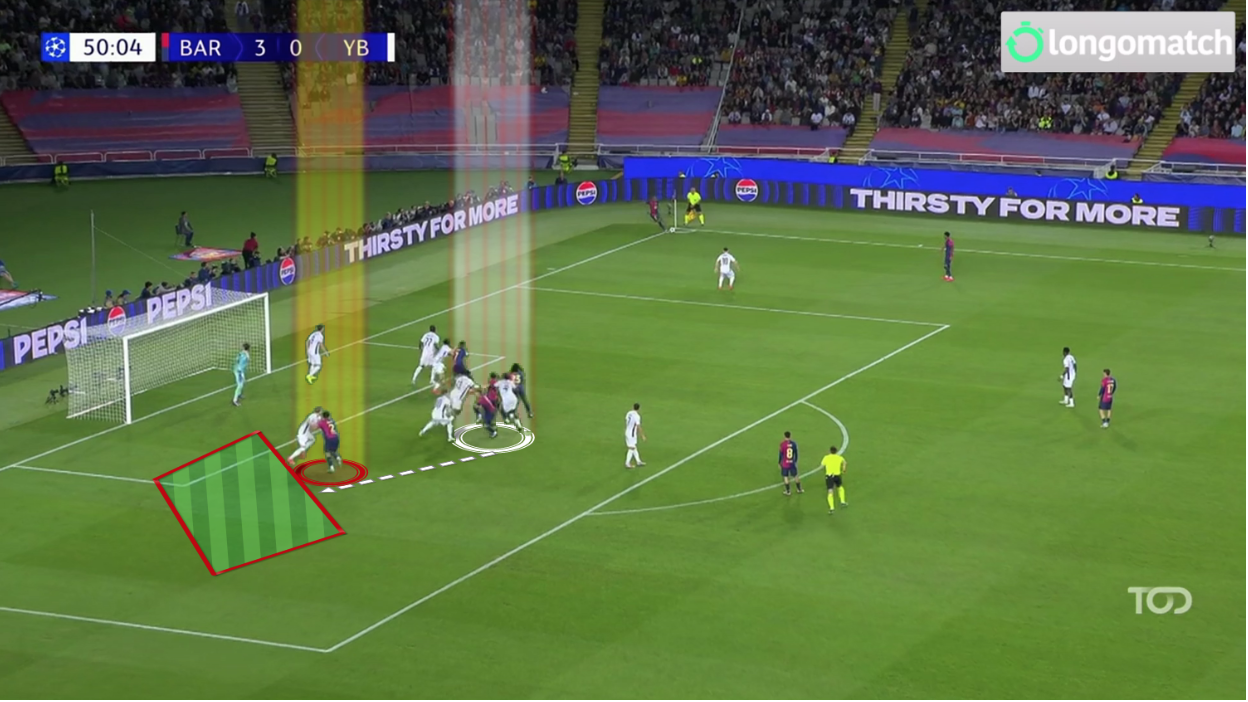
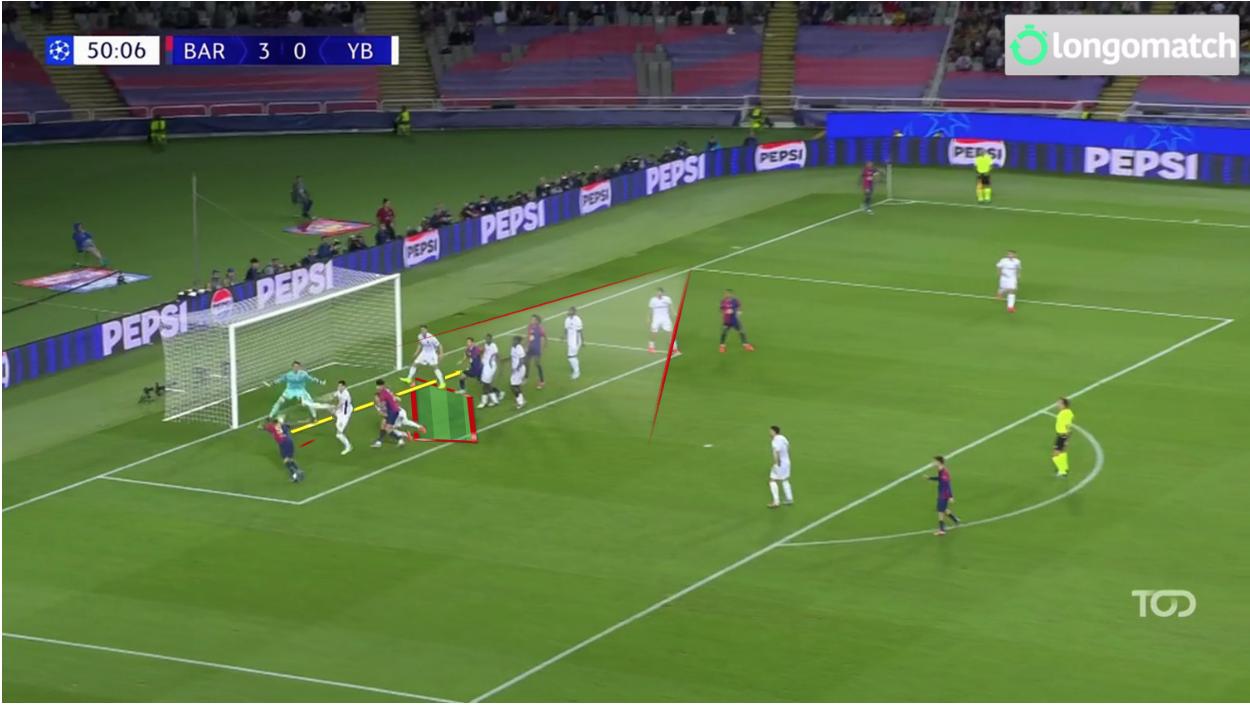
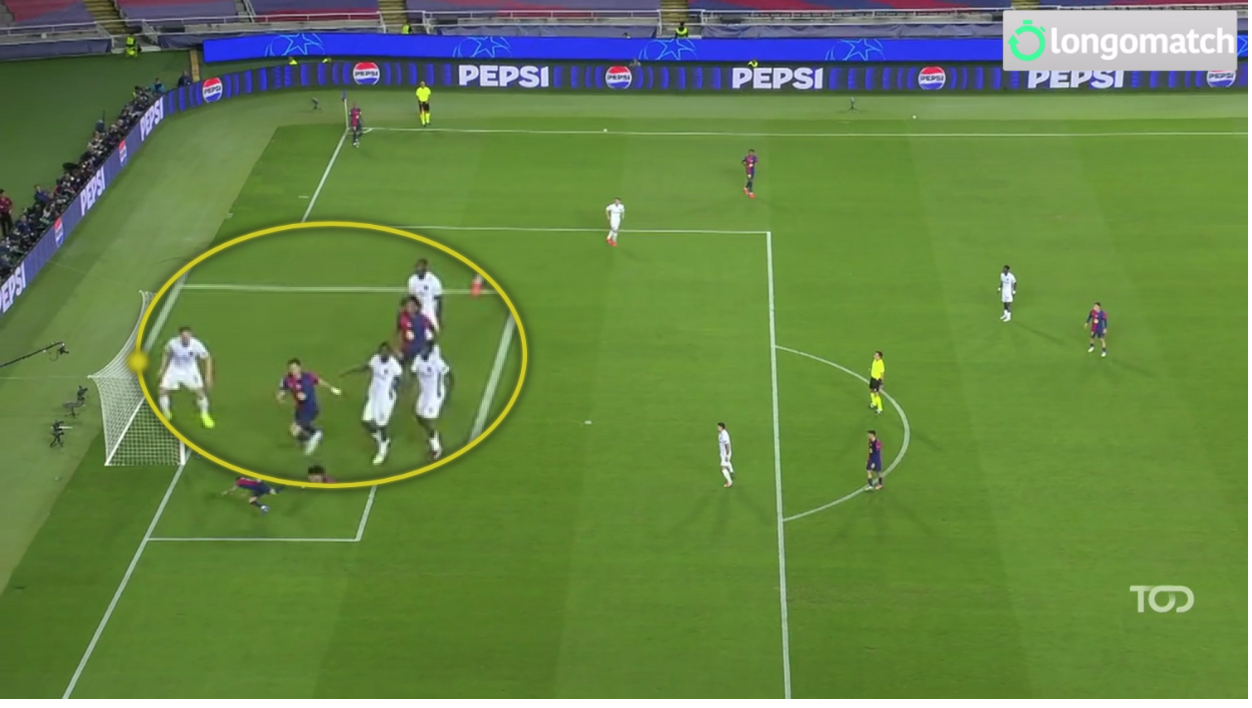
Moving onto their recent match vs. Athletic Club de Bilbao, Martínez (yellow) targets the far post whilst Cubarsí, Lewandowski and Koundé rush towards the near post. As usual, Barcelona leave two players by the penalty arc whilst one player is ready to receive a short corner. With Athletic putting three players in the six-yard area and three prepared to deal with a short corner, Ernesto Valverde’s side have left the far post as an Achilles heel waiting to be attacked.
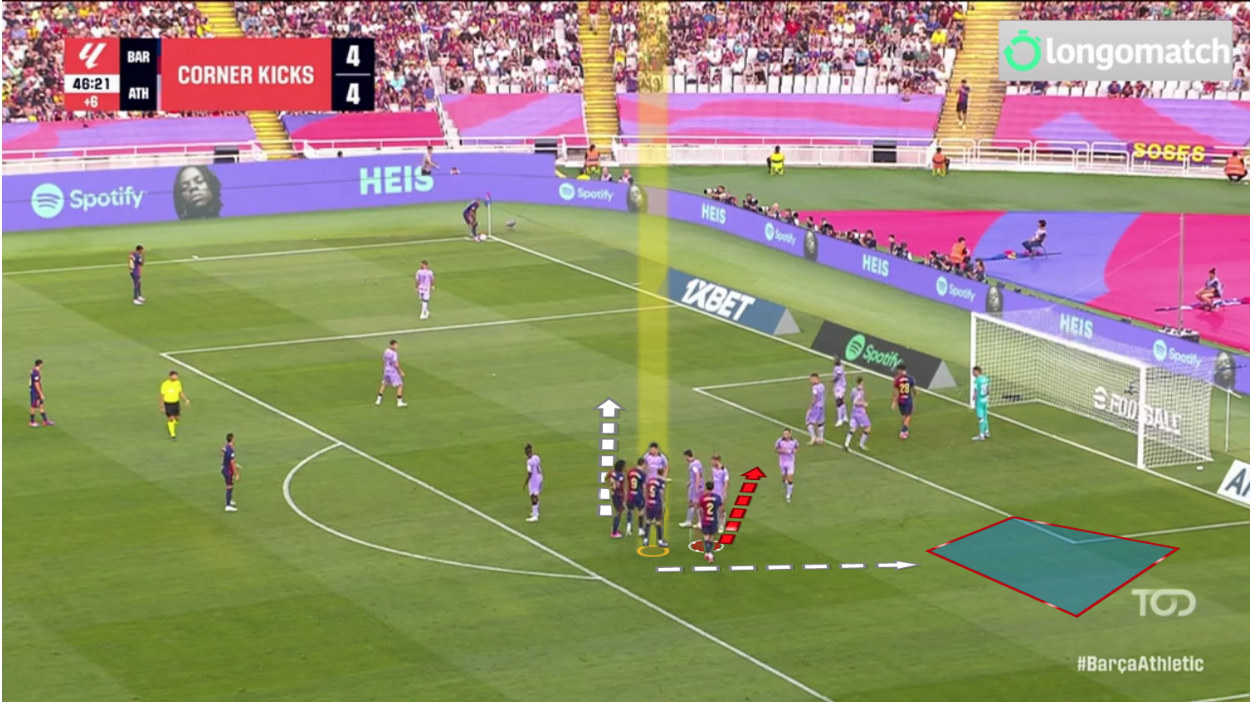
The trio runs the first post and Martínez breaks away from the defender and moves to the far post. Martínez is able to make a move to the blind side as his marker is caught ball-watching, with the ex Athletic defender hitting the ball across the box towards Koundé.
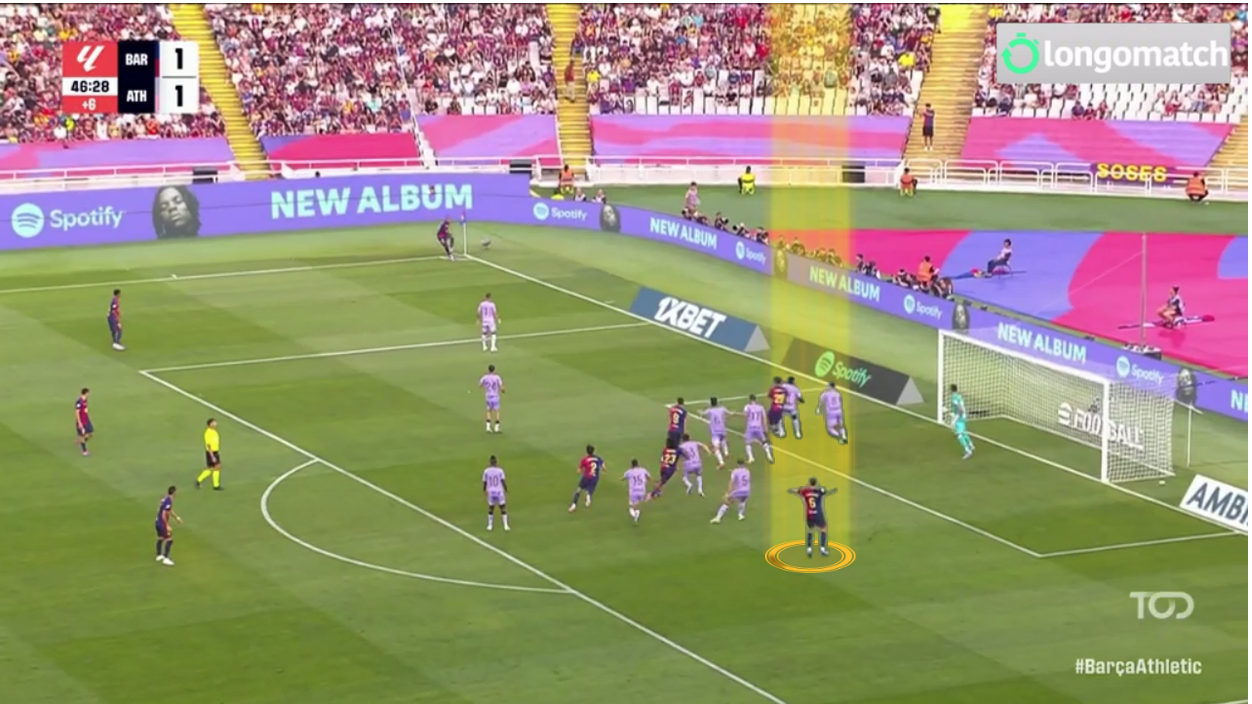
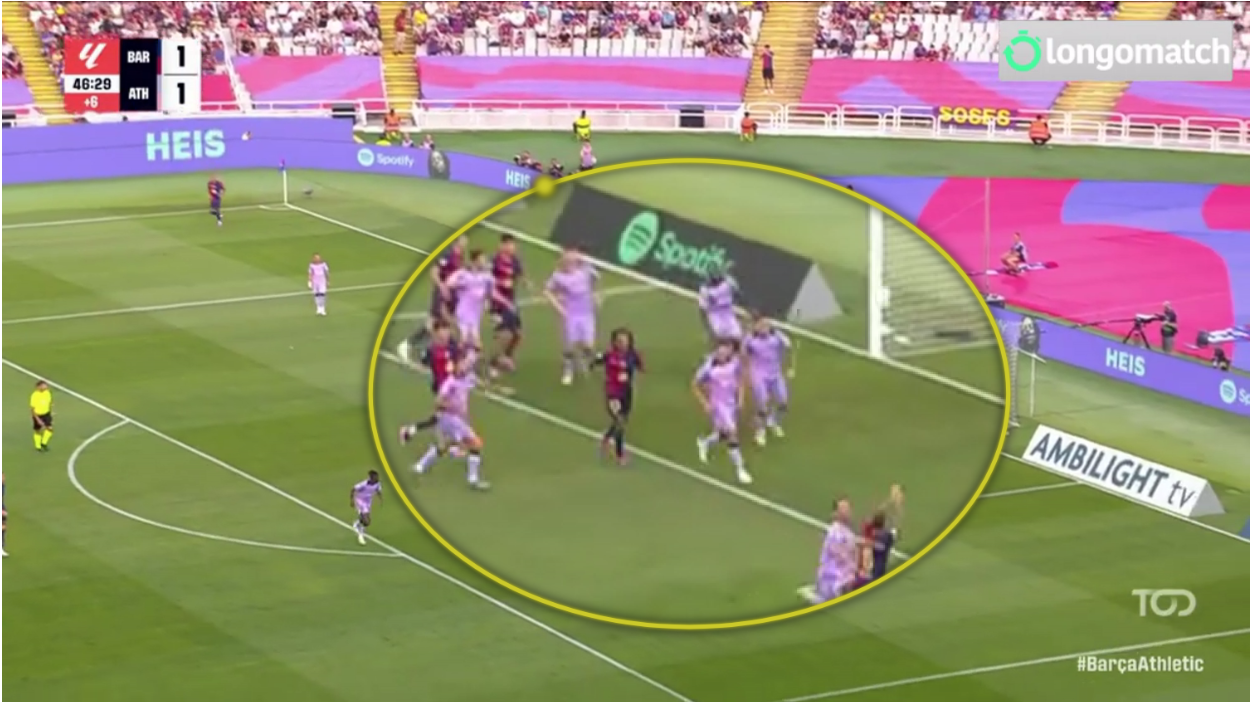
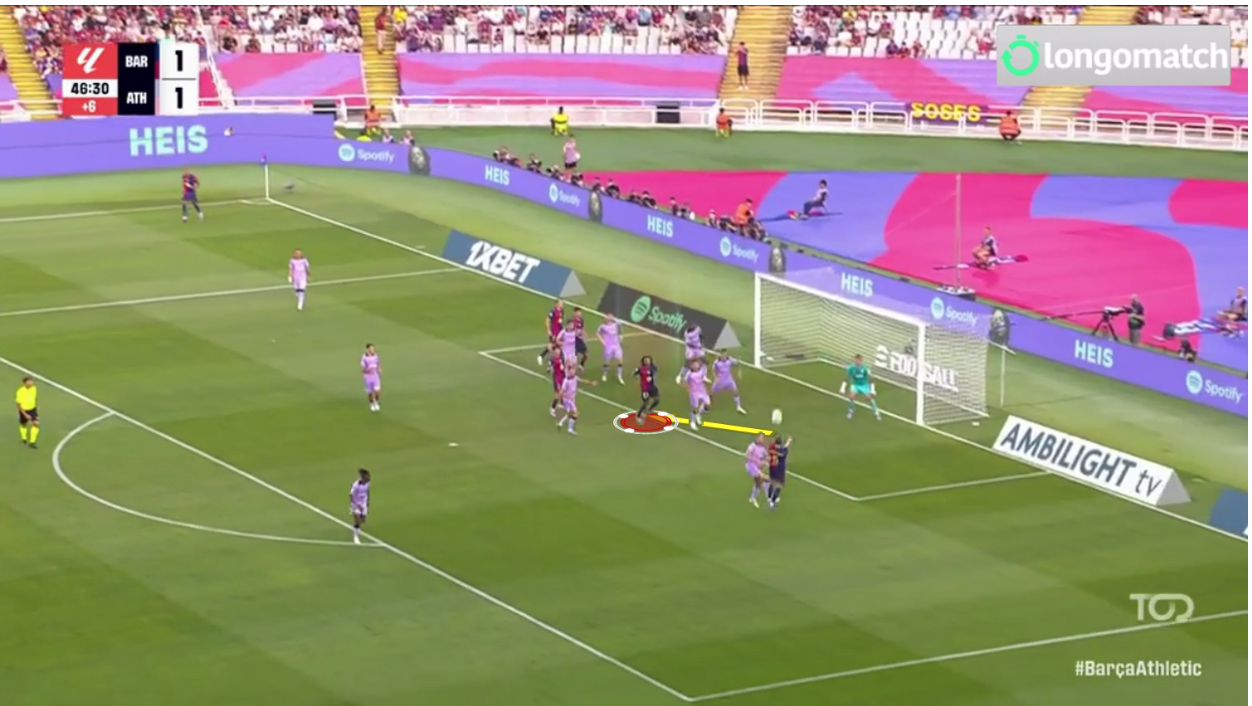
Barcelona sent a statement throughout the league when they demolished Real Valladolid 7-0 in August, and once again, their set-piece strategy came to the fore. Here, we can see Martínez win the ball and move it towards Lewandowski and Cubarsí, who were unable to control it.
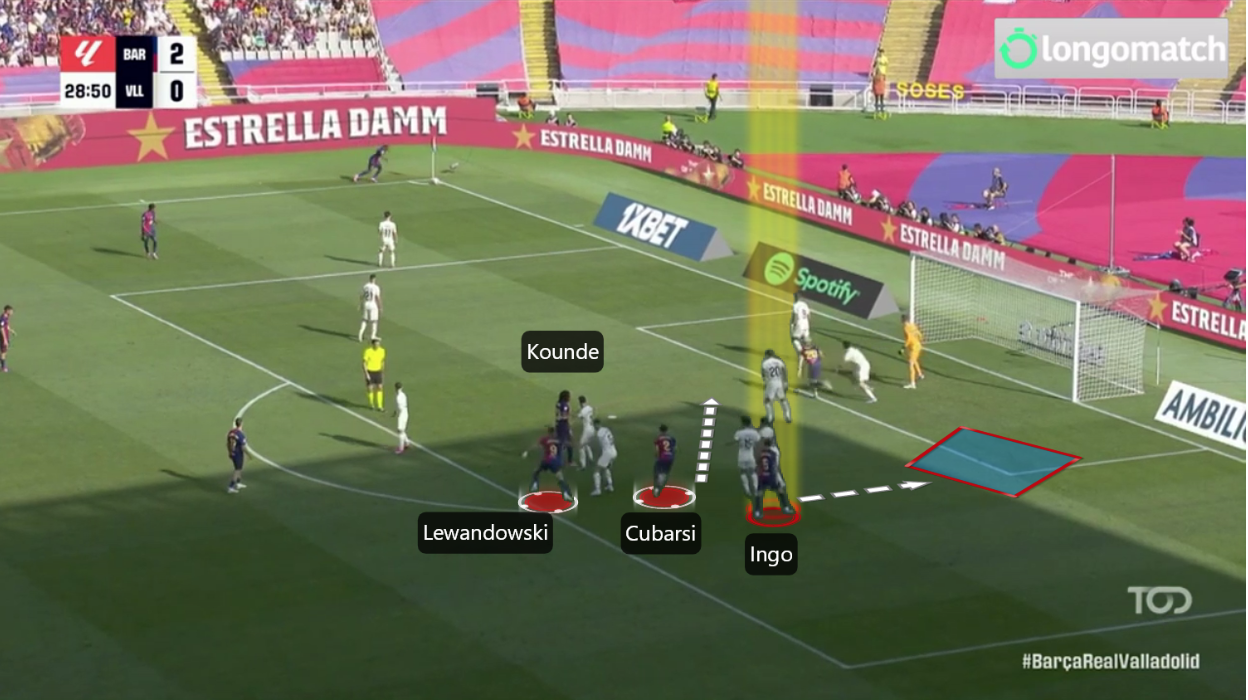
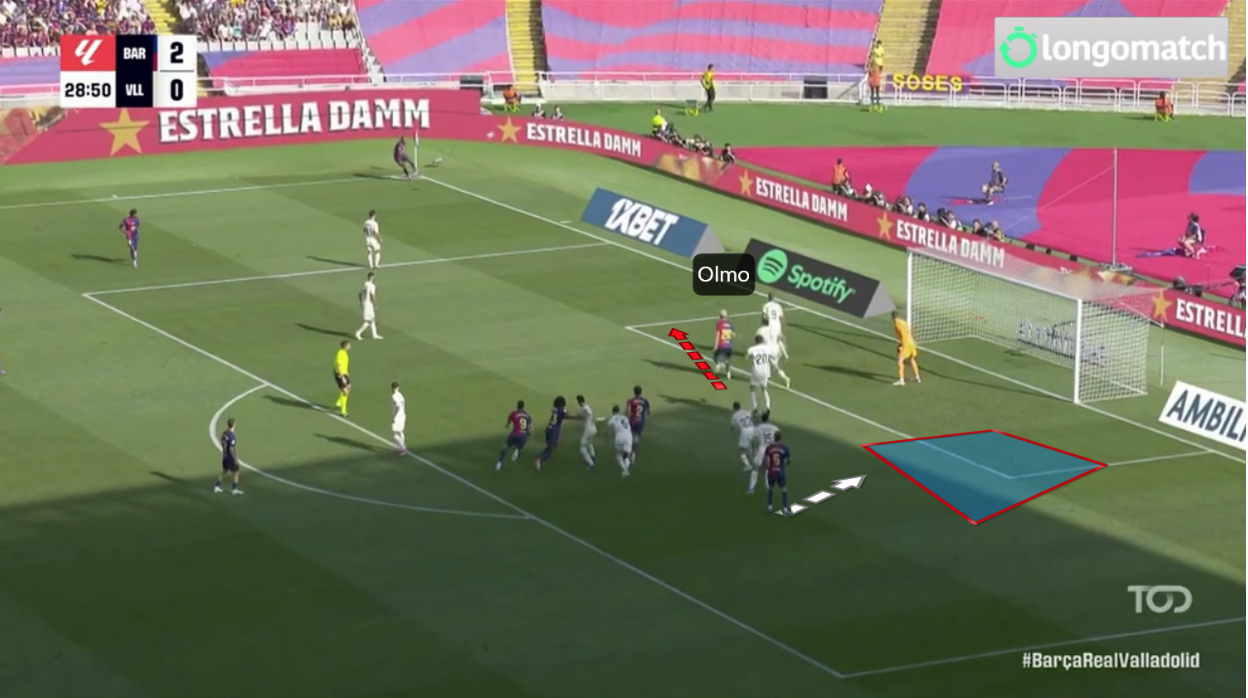
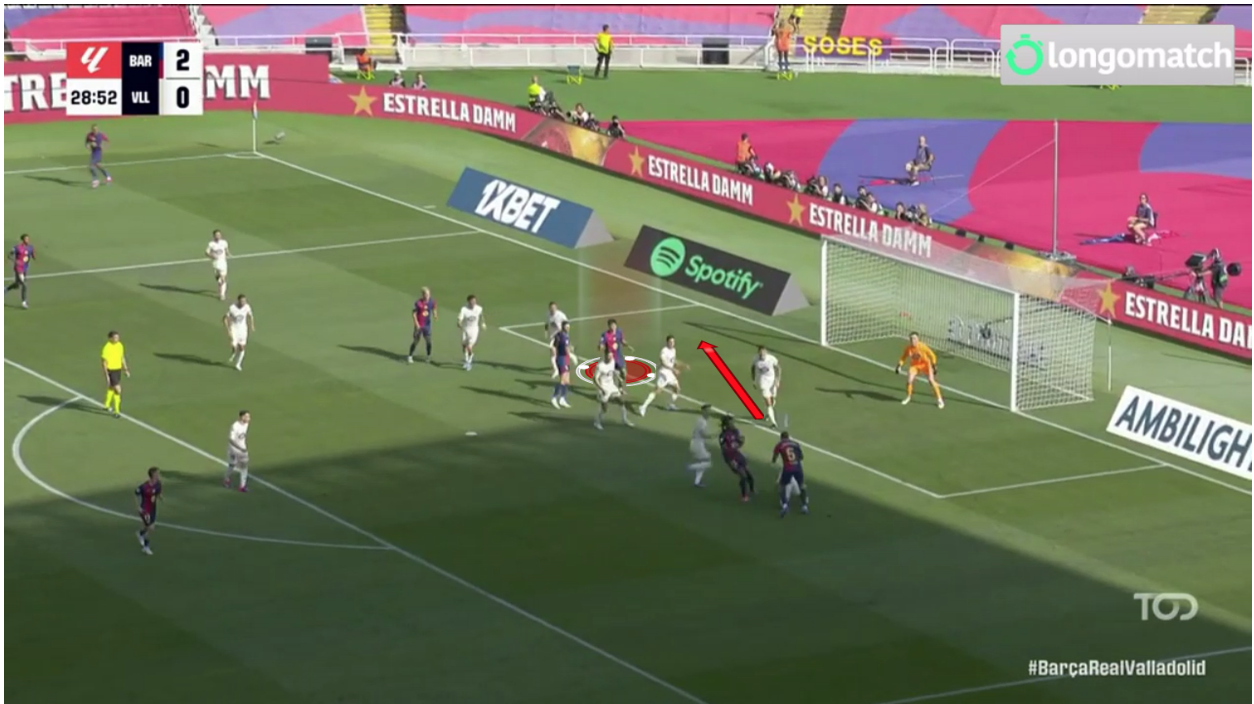
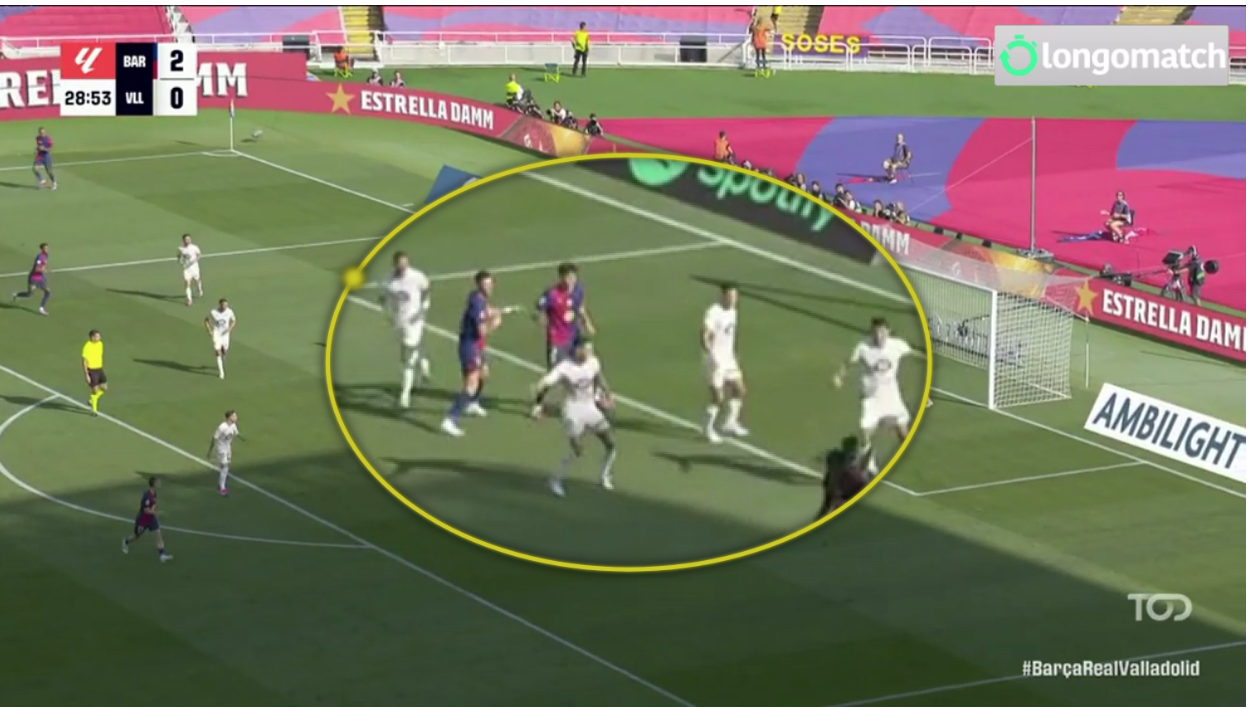
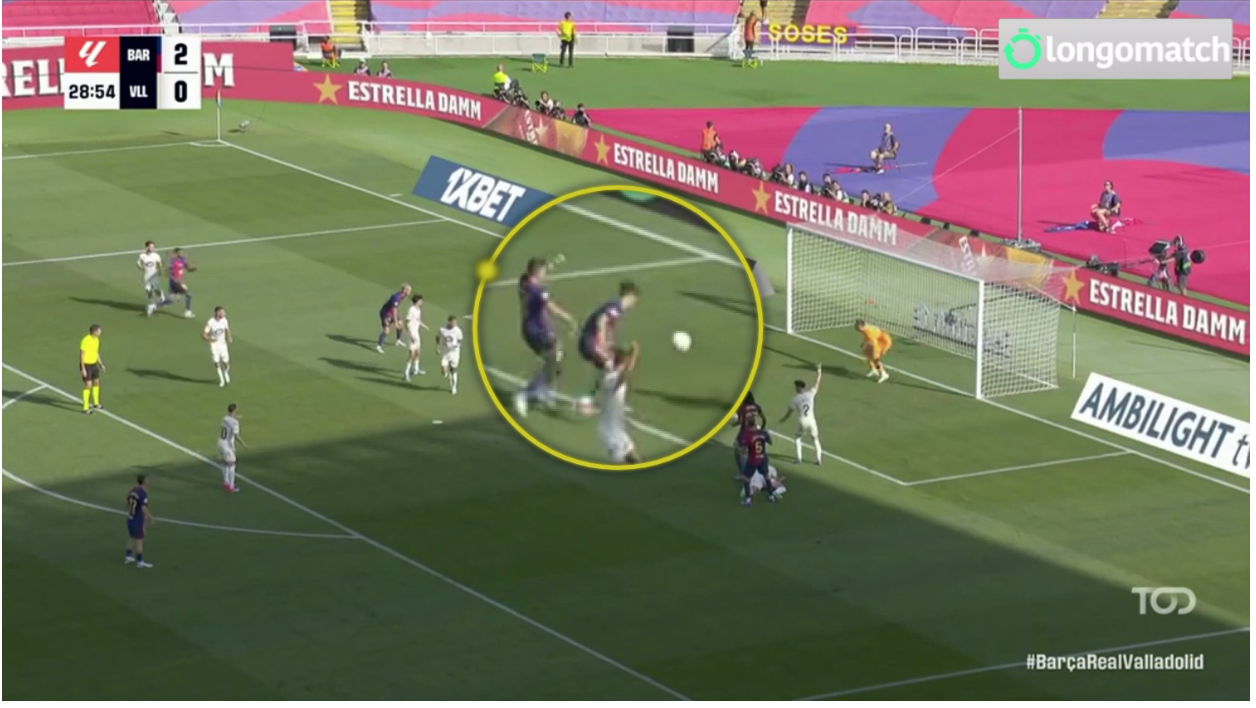
Barcelona also has a strategy for short corners, with three players standing at the penalty arc, whilst one player waits for the short corner and four players wait inside the penalty area. A player from the penalty arc will join the short corner area, thus attracting an opponent to come out from the penalty arc and opening up space in front of the box. The ball carrier will have two options: passing to a teammate or shooting on goal.
Against Young Boys, we can see Raphinha and Yamal move to the short corner area, whilst Koundé (red) and Lewandowski look to attract the opposing defenders and pull them into the six-yard area. Olmo and Martínez will drag the opposing defenders on the far post, whilst Cubarsí finds himself by the penalty arc, and Pedri remains as the target player.
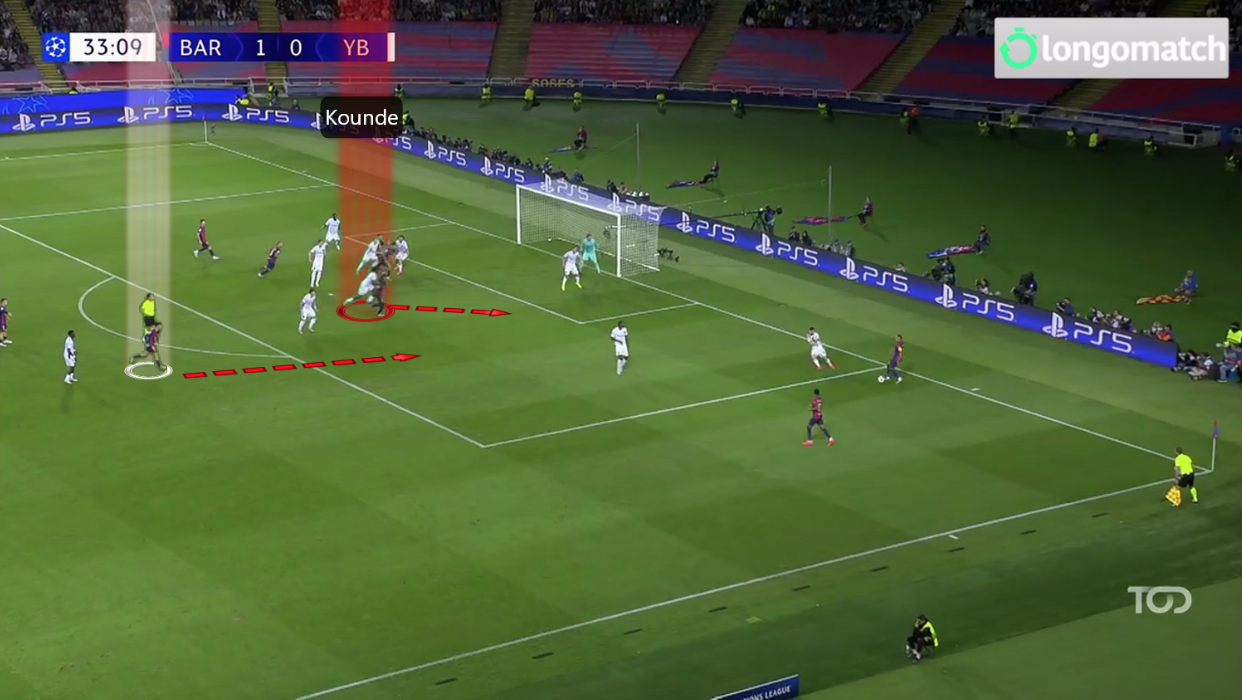
Young Boys was putting two players within the six-yard area with Raphinha playing a short corner and forcing the opposing defender to evacuate his area at the far post. Ultimately, the Swiss team leave one marker in the penalty circle and one waiting to attack and push forward in transition.
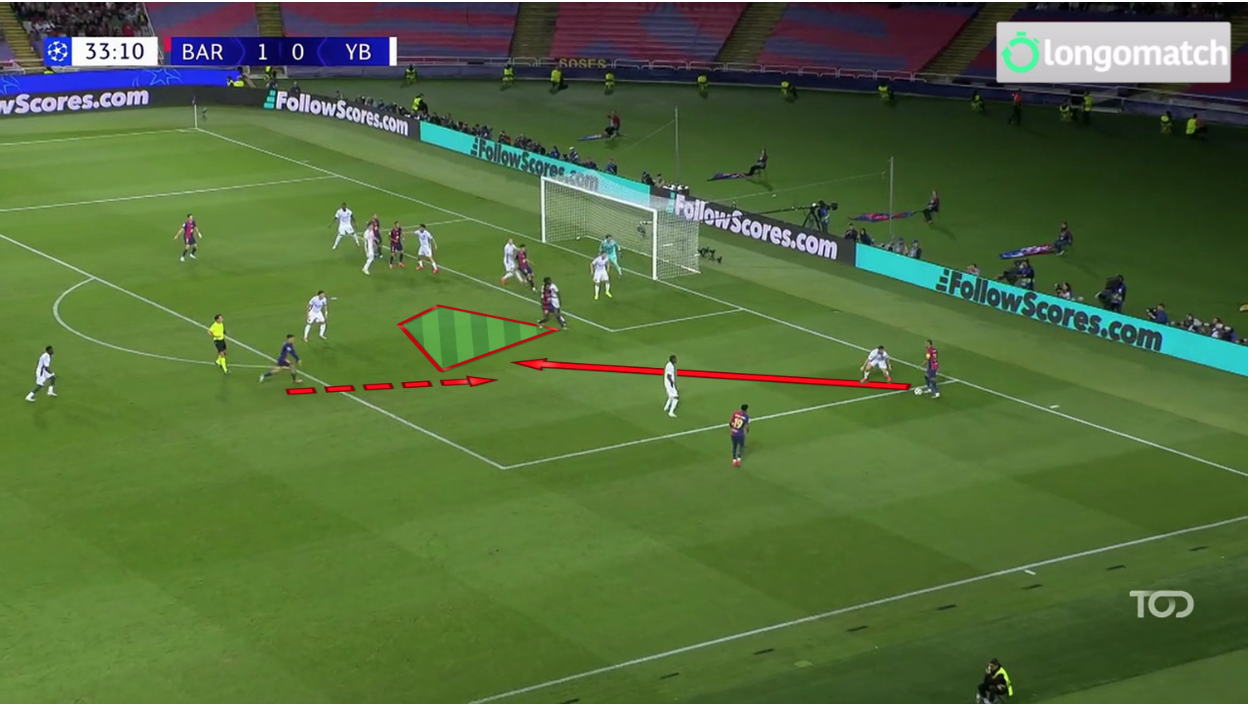
Here, Pedri and Koundé run towards the open space, and the trailing Young Boys player was late to cover the movement — as such, it was natural for Pedri to dribble and maneuver past a sea of opponents before firing a shot towards goal. Whilst his shot careens off a defender, Raphinha is able to recover it and test the goalkeeper.
In the below example, the target player — Eric García (white) — finds himself next to three players in the penalty arc, with three players staying inside the penalty area in order to attract the opposing defenders to the far post. Two Barcelona players position themselves by the short corner, whilst two Valladolid players stay by the short corner to defend the potential threat.
One of the Valladolid players goes to pick up Pablo Torre, who receives the ball for a quick pass. Only one Valladolid player remains in the penalty arc in front of three Barcelona players. García was able to run into the blind side of his marker and receive the pass, but his shot was easily collected by the opposing goalkeeper.
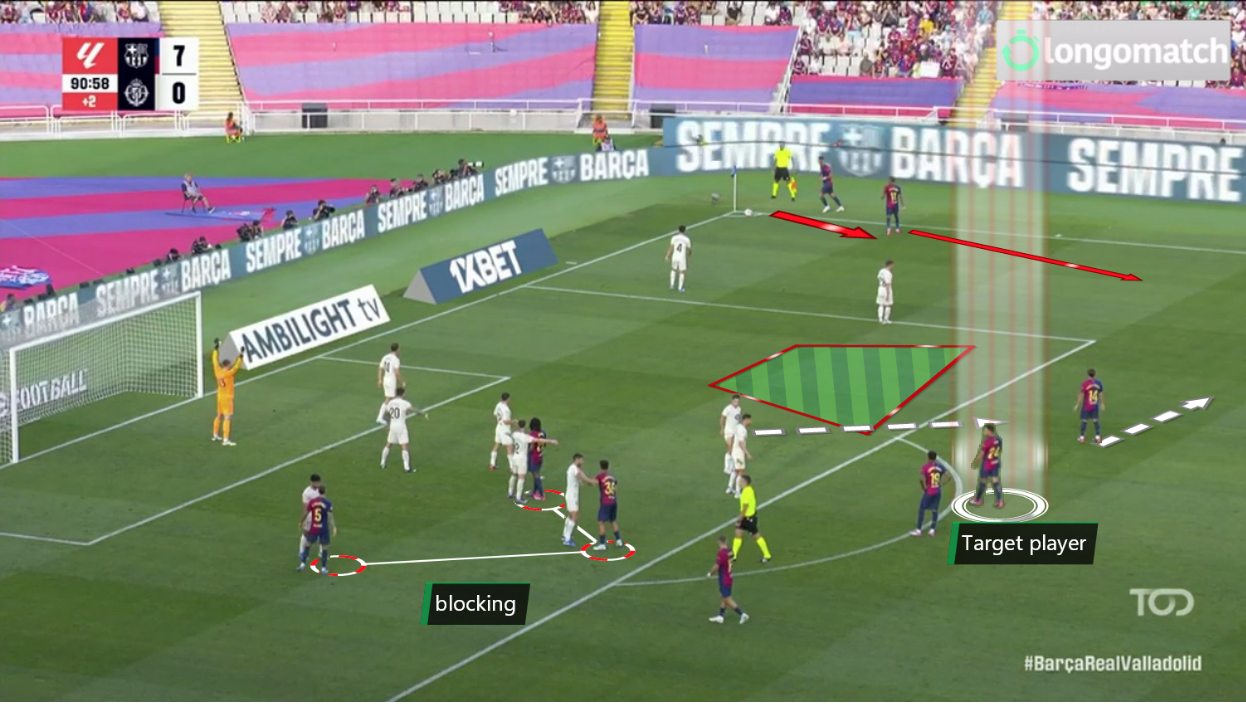
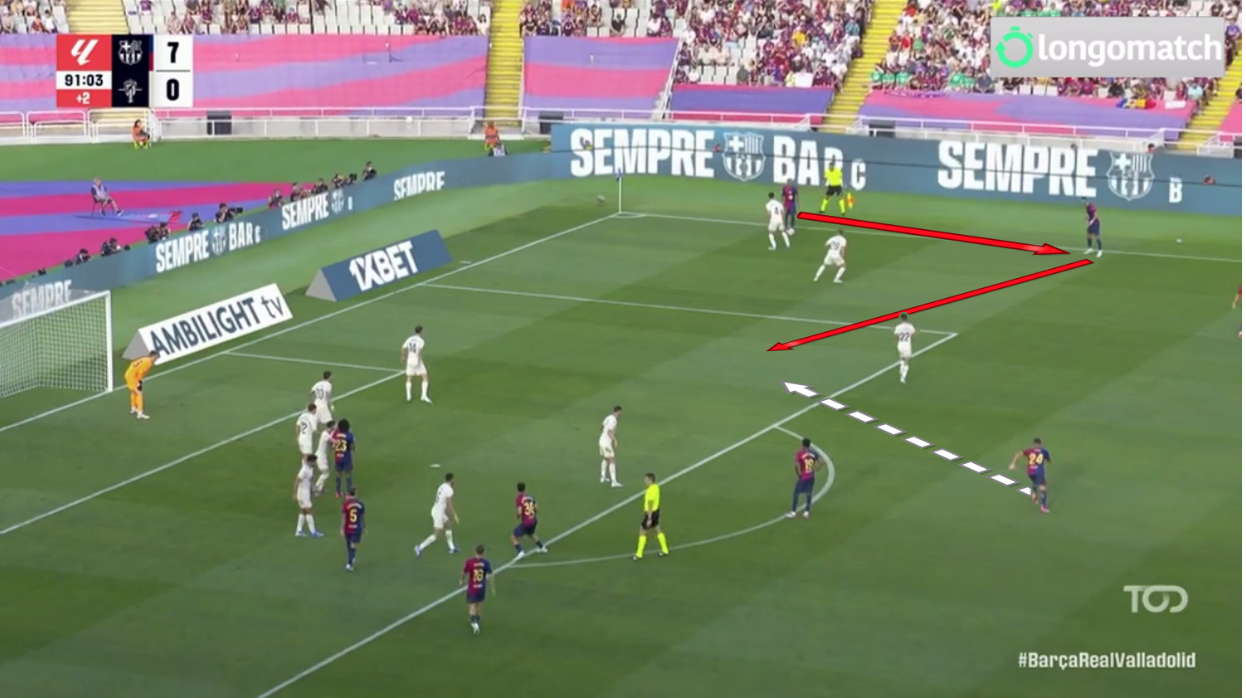
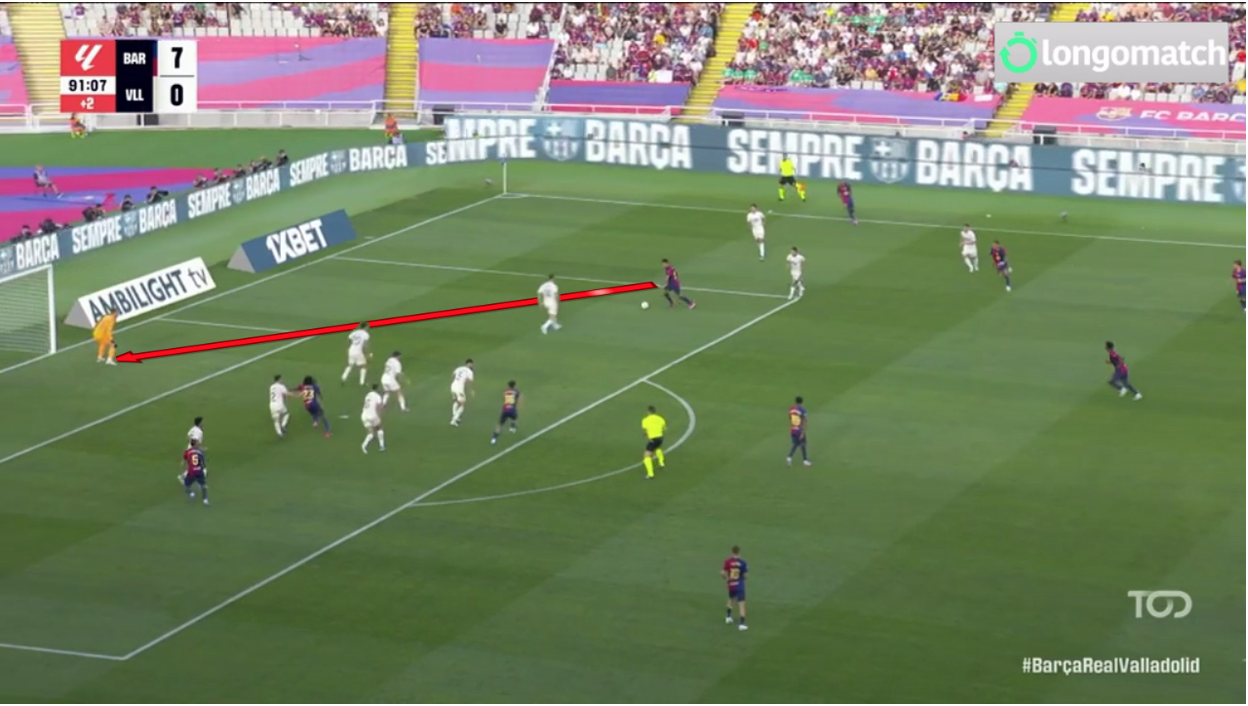
Barcelona are able to quickly transition from defense to attack after a corner kick — with just one or two passes, they will have gone all the way from their own goal to the opposing goal. They scored in this pattern vs. Valladolid, relying on three of the fastest players in the team in Yamal, Lewandowski and Raphinha.
This attacking trio was able to hold their own in terms of defensive tasks — Lewandowski positioned himself in the six-yard box, Raphinha defended the near post, and Yamal was in the penalty arc. If the opponent were to play the corner towards the near post, Lewandowski and Raphinha would be there to push up and win the ball and pass it towards Yamal.
Here, Yamal was able to receive the ball and wait for Raphinha and Lewandowski to advance forward. This trident’s quick running as well as the Valladolid defenders’ delayed reactions would result in Barcelona taking advantage of the empty space. And against Alavés, we can see Barcelona players immediately win the first ball and pass it towards Yamal, who has quickly sprinted forward from the opposing penalty arc.
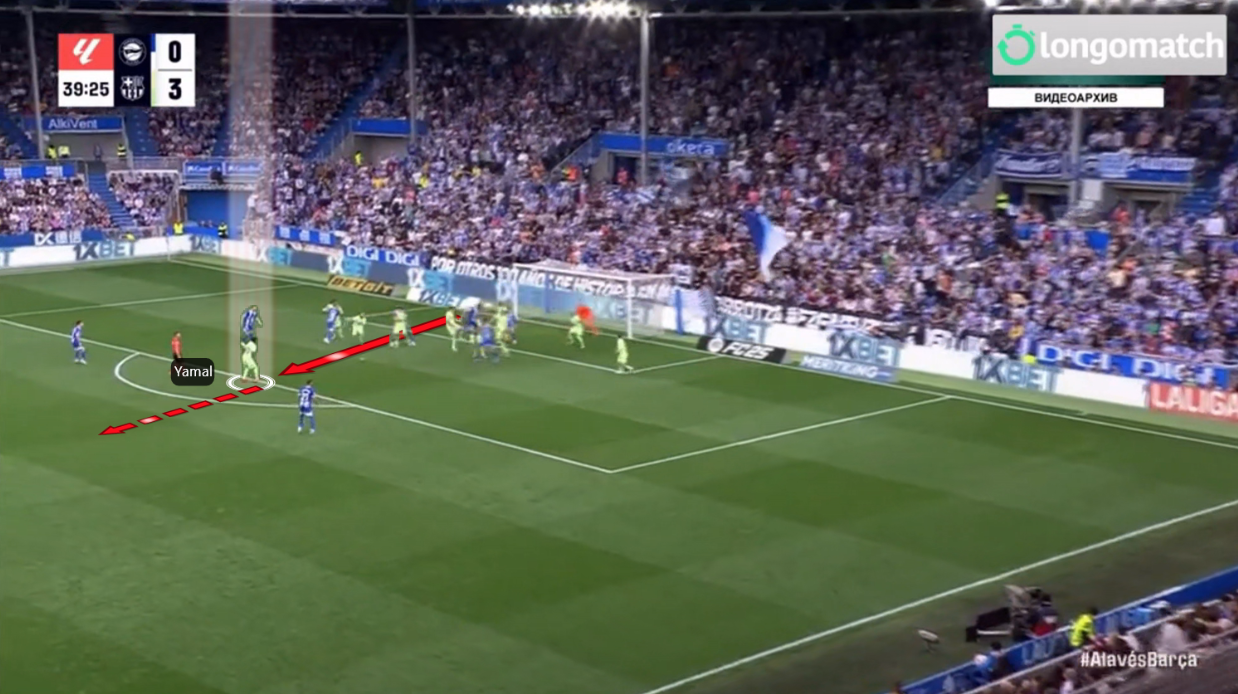
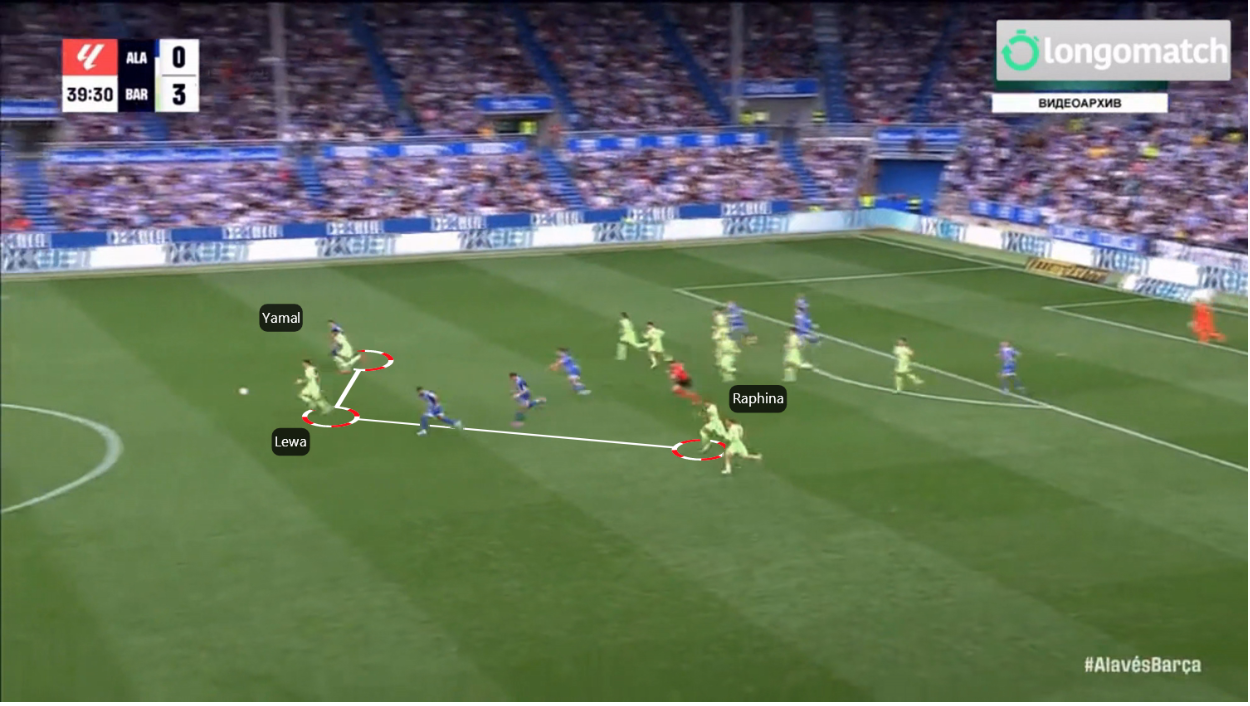
Lewandowski and Raphinha were both quick enough to create havoc on the transition, with Raphinha making a far-side run and receiving a pass from his Polish teammate, but he was a bit too slow and allowed Alavés’ defenders to get back into position.
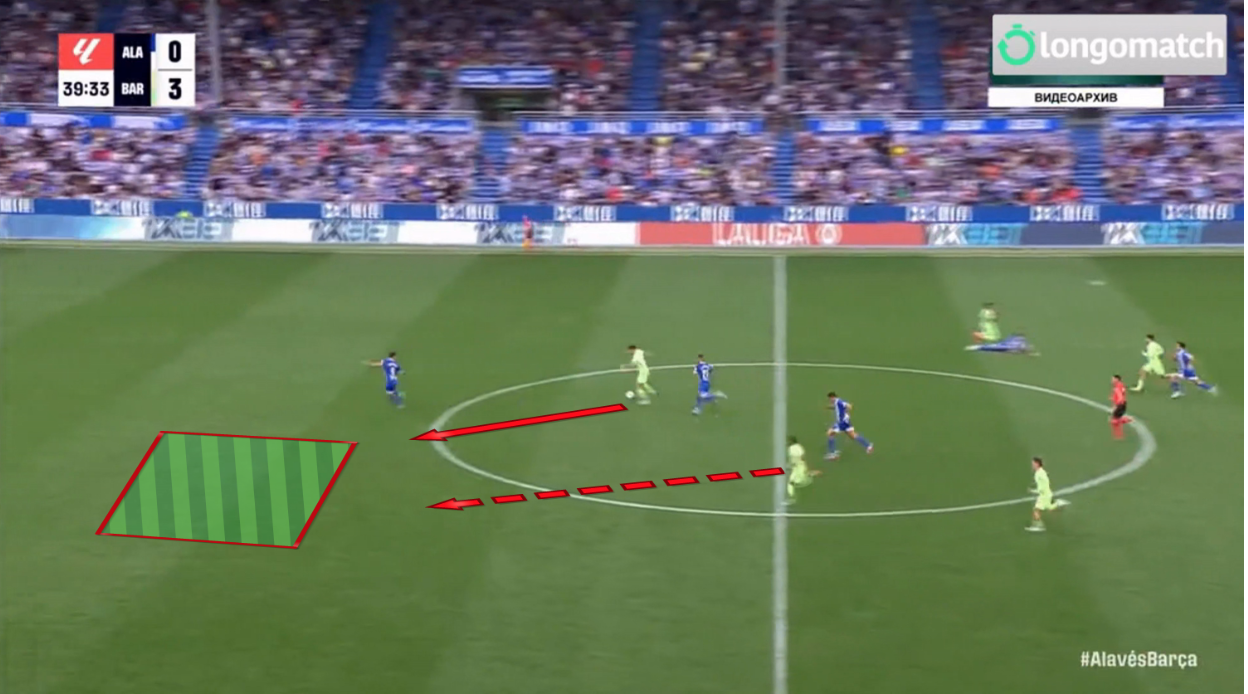
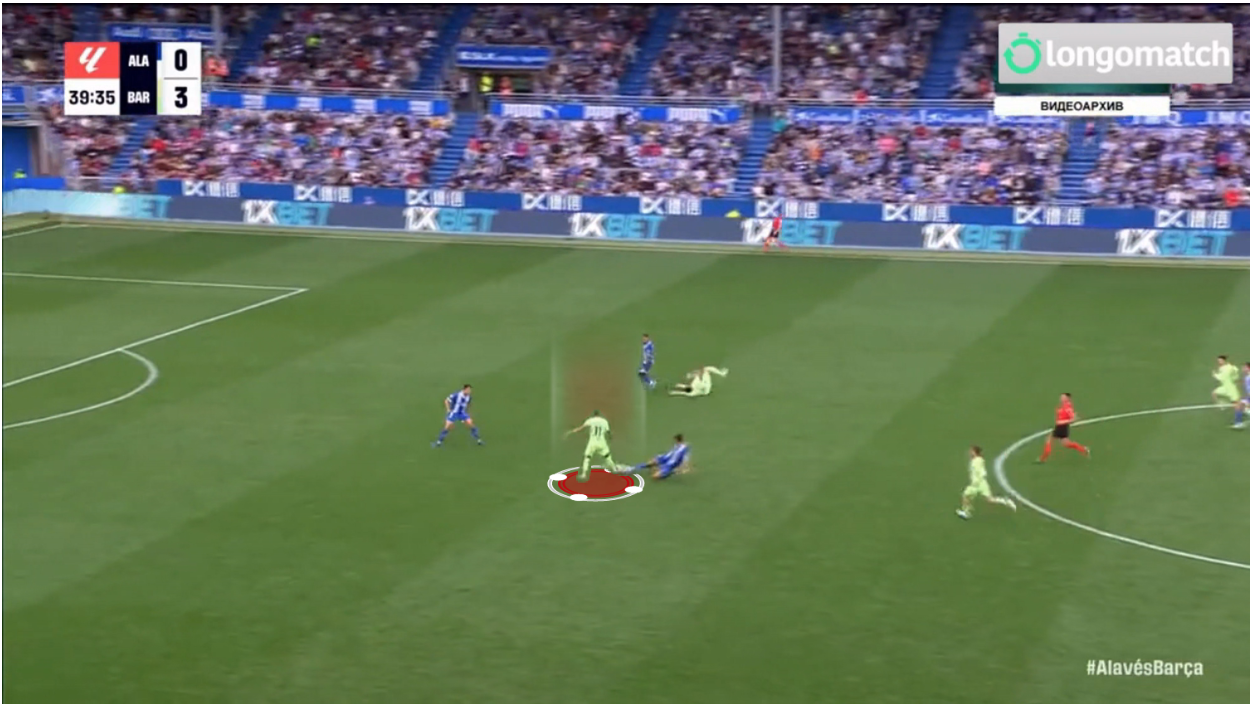
Going back to their defeat against Monaco in the UEFA Champions League, we can see Barcelona recover possession and play it forward to Yamal, Raphinha and Lewandowski. Raphinha ran between the Monaco defenders and played a defense-splitting pass towards goal, but Philipp Köhn was quick to come off his line and prevent a dangerous opportunity from materializing.
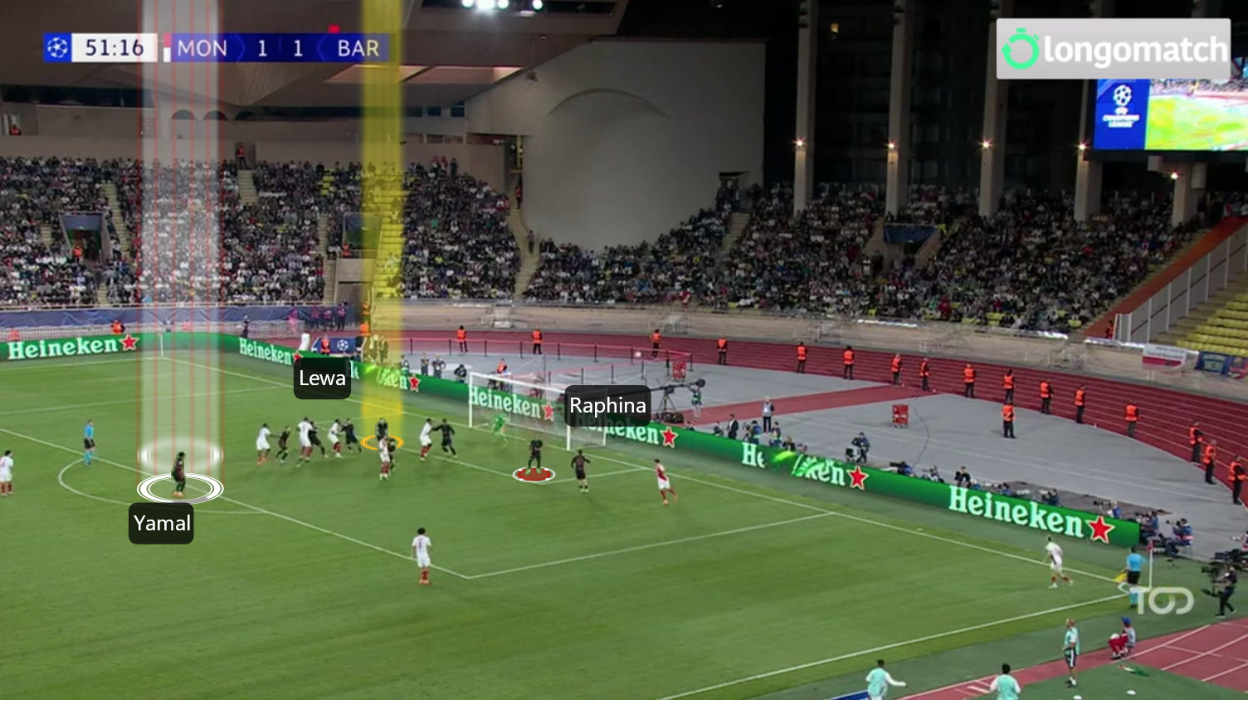
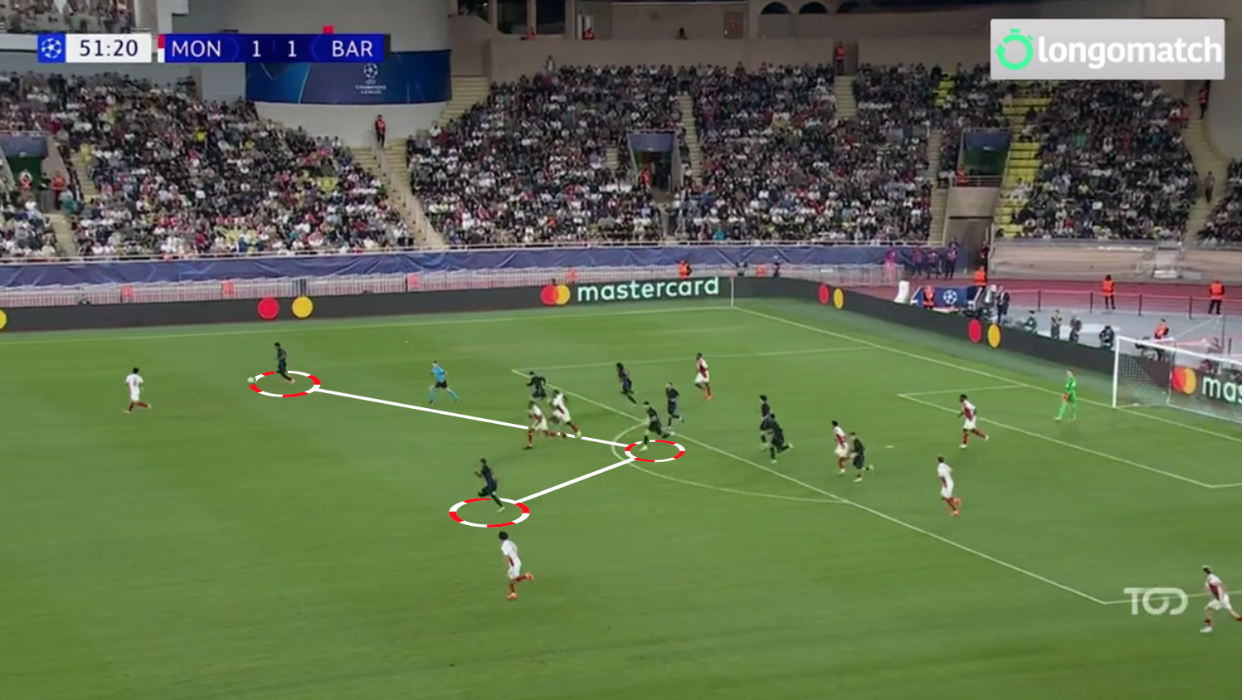
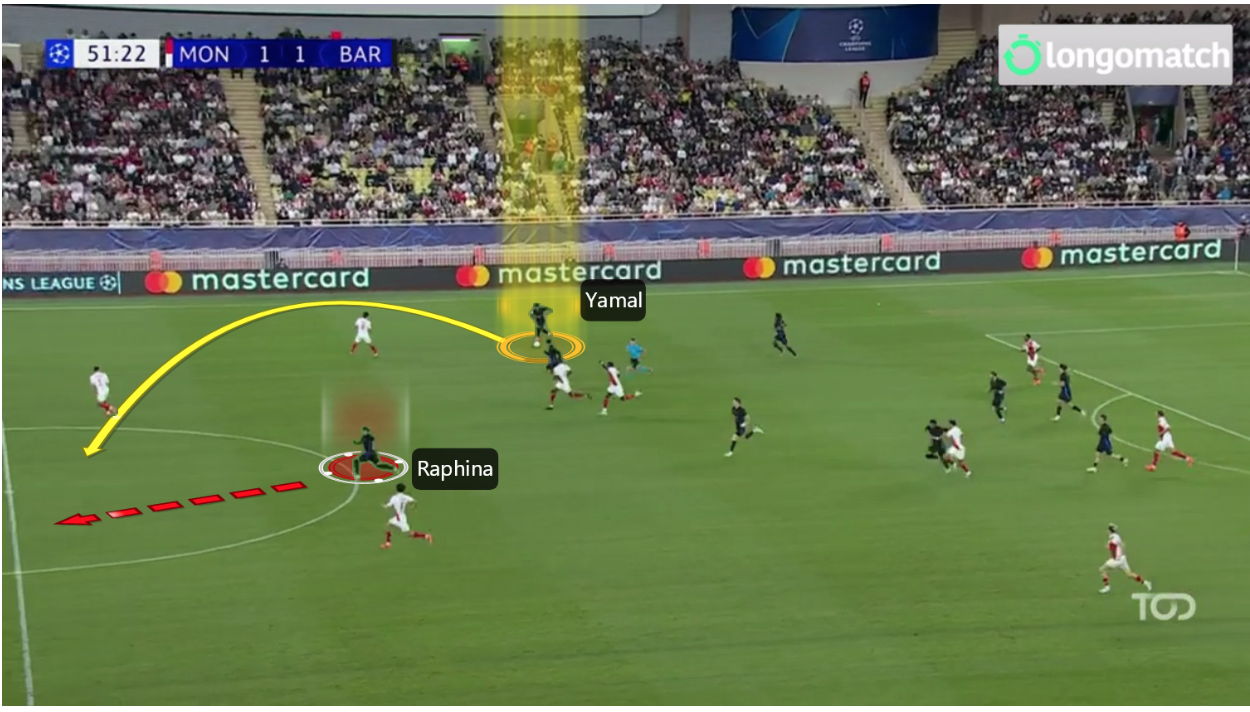
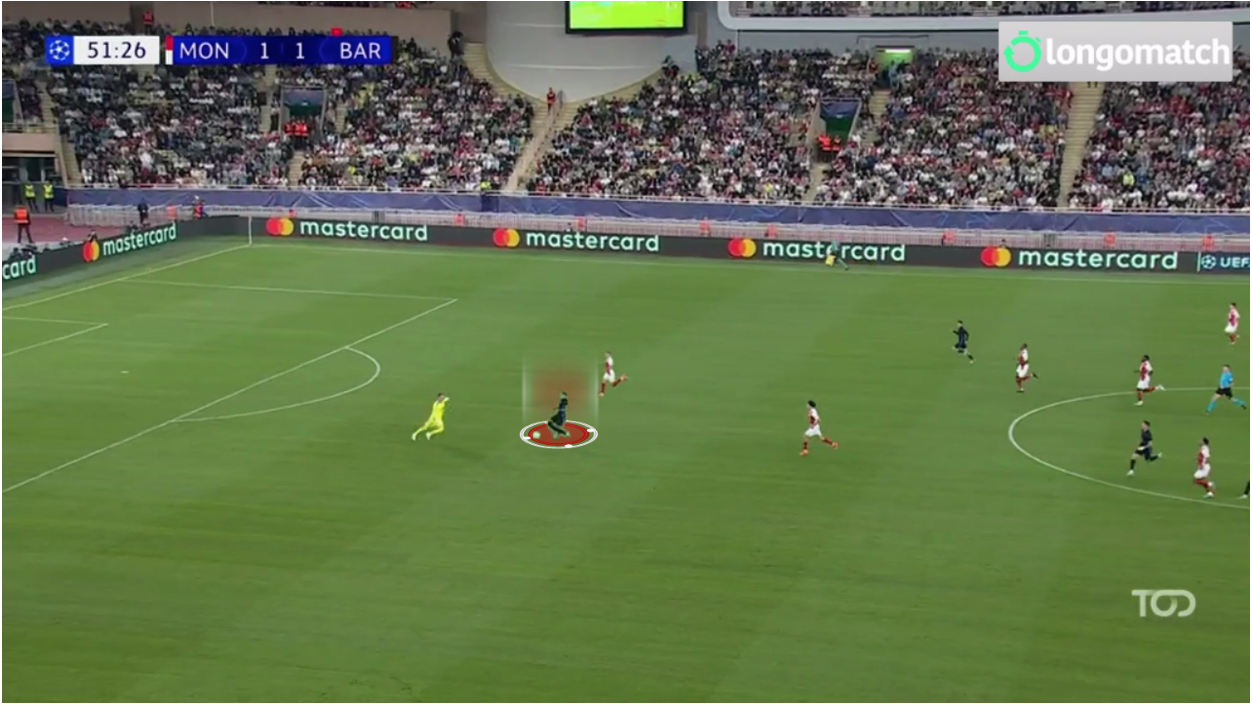
Last but not least, we can see Yamal positioned to receive a short corner, whilst the Valladolid players attempt to execute a corner to the near-post. Yamal was able to run into space and create a 5v5 opportunity, with Raphinha running in between the defenders and receiving the ball. Yamal threaded the needle and put Raphinha in prime scoring territory, with the Brazilian making no mistake and carving a shot between the goalkeeper’s feet.
Barcelona find themselves primed to reclaim the LaLiga championship from rivals Real Madrid, whilst they’ve also won every single UEFA Champions League match with the exception of their defeat vs. Monaco. The Blaugranas are clicking on all cylinders under Flick, and as long as they continue attacking and defending set-pieces with the same consistency and efficiency, they will be a contender on all fronts this season.
By: Mahmoud Salem / @masalem6
Featured Image: @GabFoligno / Quality Sport Images / Getty Images
